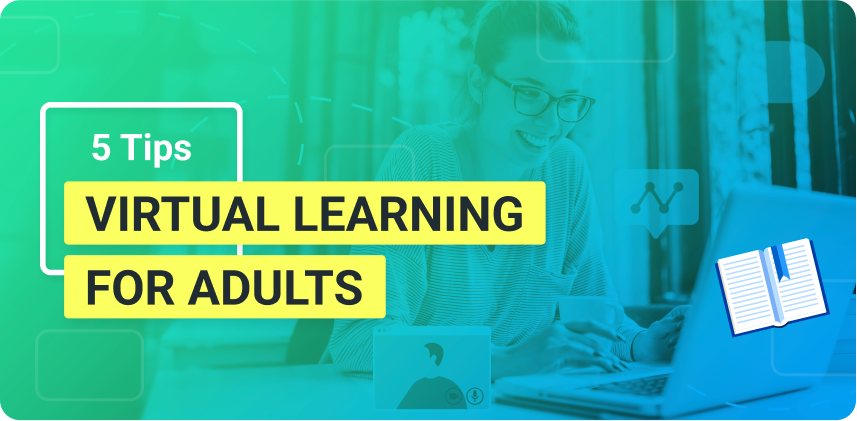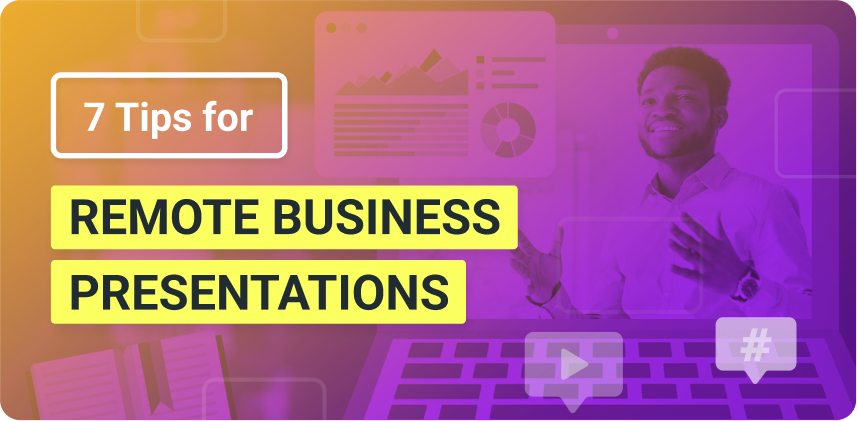Adults face many challenges when learning online. Here is how teachers and instructors can make virtual learning better for adults!
The challenges of teaching adults in an online setting are many, including accommodating their current knowledge or expertise, taking into account their busy lives, and finding ways to keep them focused on the lesson at hand. In addition, when teaching a mature audience, it’s crucial to keep in mind their needs and expectations. In this article, you’ll learn how to make virtual learning better for adults and therefore increase the success of your virtual training, online course, webinar sessions, and so on.
Need more live video tools for your virtual training rooms? Check out ManyCam and download it for free today!
5 Tips on How you Can Make Virtual Learning Better for Adults
1. Allow for autonomy, self-directed learning, and variety of choice
Adult students are more self-sufficient than children or teens. Therefore, they might already have some experience in the subject you are teaching or prior basic knowledge.
Though you are still the teacher, you should try to allow for some form of autonomy. You can consider implementing self-directed learning and offering them the option to dictate their own curriculum and pace.
Ask your students at the start of the course what subjects they’re already knowledgeable on so that you can tailor the course accordingly. This way, you will cover known topics relatively quickly and focus more on what they want to learn.
Another thing that can be discussed with the group is the structure of the classes. Get their opinions on what topics they would like to spend extra time discussing as a group or doing assignments and getting feedback on. Of course, you should still keep the course structure the way you intended, but it’s good to try and find some flexibility to accommodate your students.
In other words, make them feel like their voices and opinions are acknowledged and taken into account.
Another great way to do this is to include resources for self explorative learning. For example, with ManyCam, you can add videos and other resources directly to your video conference. It will give your students a glimpse of a source you can recommend for them to research further in their own time if they’re intrigued.
2. Remember to keep it applicable and relevant
Going off of the last point, you must keep in mind that adult learners are here for particular and usually practical reasons. Therefore, it’s essential not to waste their time with too much theory or knowledge you know won’t necessarily benefit them in the real world.
Though it can be tempting to cover absolutely everything from A to Z, remember that your students have a more developed way of thinking and don’t need to have all the details explained to them.
Instead, they’d probably appreciate you keeping your topics pertinent to everyday, practical applications. Include discussion sessions so that everyone can have a chance to share their unique experiences and knowledge and ask any specific questions they may have. These will also keep your lesson plans more engaging because they break down barriers between teacher and student and make adult learners feel more at ease.
3. Accommodate busy schedules
Don’t be a stickler for the rules – be understanding if your students can’t make it to classes sometimes. Adult learners usually have jobs or other priorities in life, which can come in the way of their studies. Try to offer your support as much as possible by:
- Offering detailed notes on each class
- Recording your lesson so they can consult it
- Having some leniency when it comes to deadlines
- Reassuring them, they can contact you in between classes
These simple tips can help you develop a closer relationship with your students, which, in turn, will help them learn even more.
4. Create a genuine space for communication
Harboring a space for communication, not just between you and your students but among them, will create a more stimulating classroom environment. It also helps take some of the load off of yourself.
Promoting communication and synergy amongst your students and yourself will make your students feel part of a community. That’s the key to a successful course and for students to actually learn the most while enjoying the process.
Setting up something like a Facebook group or a group chat on a platform like Slack or Discord will facilitate these communications. It also makes all conversations accessible to go back to if your students are looking to references or shared resources.
5. Include visually pleasing graphics and design elements
Like with younger students, creating dynamic and aesthetically pleasing presentations is key in ensuring your learners stay focused on the lesson at hand.
Though you don’t need as many bells and whistles as you do with children or young adults, such as ManyCam’s stickers and 3D masks, you still need to pique their interest. With ManyCam, you can add transitions, multiple resources, picture-in-picture layers, and other tools, such as the whiteboard, to keep them engaged.
Adding videos, exciting graphics, and other intricate design elements to your presentations will keep your audience engaged. It also helps ensure they see your professionalism. So they are more likely to build trust with you and learn from you.
Key Takeaway
Whether you are creating webinars, virtual training courses, or any other adult learning session, keep these tips in mind. They will help you earn your students’ trust and, in turn, help them learn the most from you. The key to making virtual learning better for adults is establishing a connection with your students and getting them engaged right off the bat.





